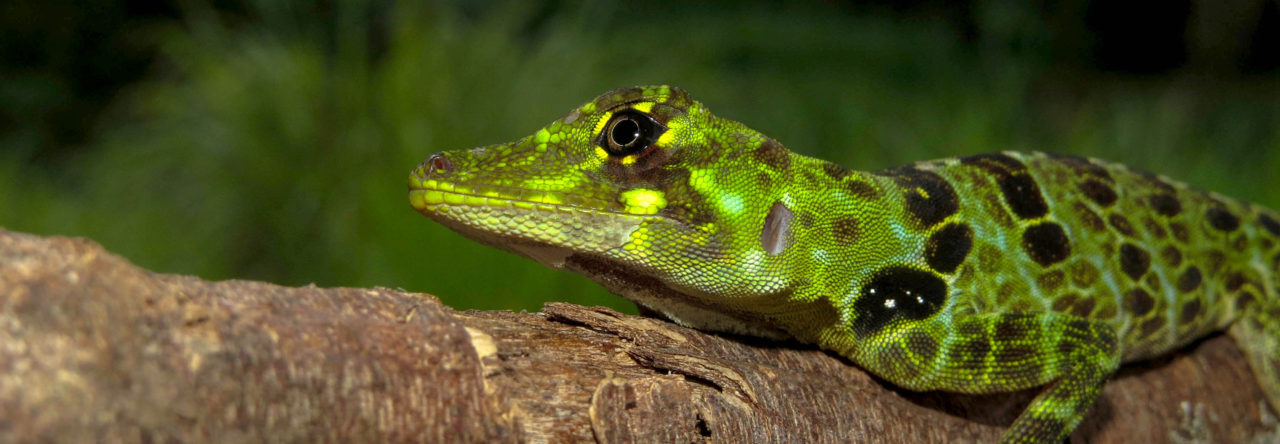
A slide from Danielle Klomp’s talk showing how color is used in communication by some species of lizards. Check out the quick guest appearance by an anole.
The diversity of anole dewlap shapes, colors, and patterns is one of their most distinctive features. But anoles are not the only squamates with flashy dewlaps. When it comes to such accoutrements, anoles have some stiff competition from their Agamid cousins in the Indo-Pacific region, the ‘flying’ dragons (Draco). Draco lizards don’t really fly, of course. Rather, they can laterally expand their ribs and the connecting membrane to create a ‘wing’, which they use to glide between trees in their habitats. If you haven’t seen how they do this, it’s more than worth a watch. Lest you think anoles get left behind in this respect, we do know that some anoles glide, as well, even if they don’t exhibit the impressive wing-like structures that Draco lizards have.
As I learned at Danielle Klomp’s talk at ASH 2015 last week, their dewlaps are almost as impressive as their gliding ability. Danielle is a PhD student working with Devi Stuart-Fox and Terry Ord and her dissertation has focused on studying the evolutionary ecology of Draco lizards. This past week she presented her work on these lizards’ dewlaps and what role they may play in sexual selection. Danielle examined dewlap size and coloration in 13 species of flying dragons. Overall, she found a strong negative correlation between color contrast (meaning they stand out relative to background coloration) and dewlap area in male lizards. Thus, she found that male dragons either had big dewlaps or conspicuously colored dewlaps, but not both. These results suggest that sexual selection for male conspicuity is occurring, but why can’t lizards exhibited large, conspicuously-colored dewlaps? Danielle suggested that having dewlaps that were both conspicuous in color and size were either too risky (meaning that they would be considerably more vulnerable to predation) or too costly to produce or maintain, though the precise mechanism underlying this pattern remains uncertain.
To address whether dewlap area and color contrast were related to predation intensity, Danielle set out plasticine lizard models and then assessed the number and types of predator bites. She found that males from species living in habitats with relatively high predation intensity exhibited relatively large dewlaps with low color contrast, whereas those living in area with low predation intensity had smaller dewlaps and greater color contrast.
In short, Danielle’s results suggest that the use of larger or more colorful dewlaps in social communication may be strongly influenced by the interaction between sexual selection and predation risk.
- SICB 2018: Revisiting the Fitch-Hillis Hypothesis in Mexican Anoles - January 8, 2018
- Evolution 2017: Urban Anoles Sprint Faster on Smooth Substrates - June 26, 2017
- SICB 2017: New Insights into Pre- and Postcopulatory Selection in Anoles - January 10, 2017





Leave a Reply